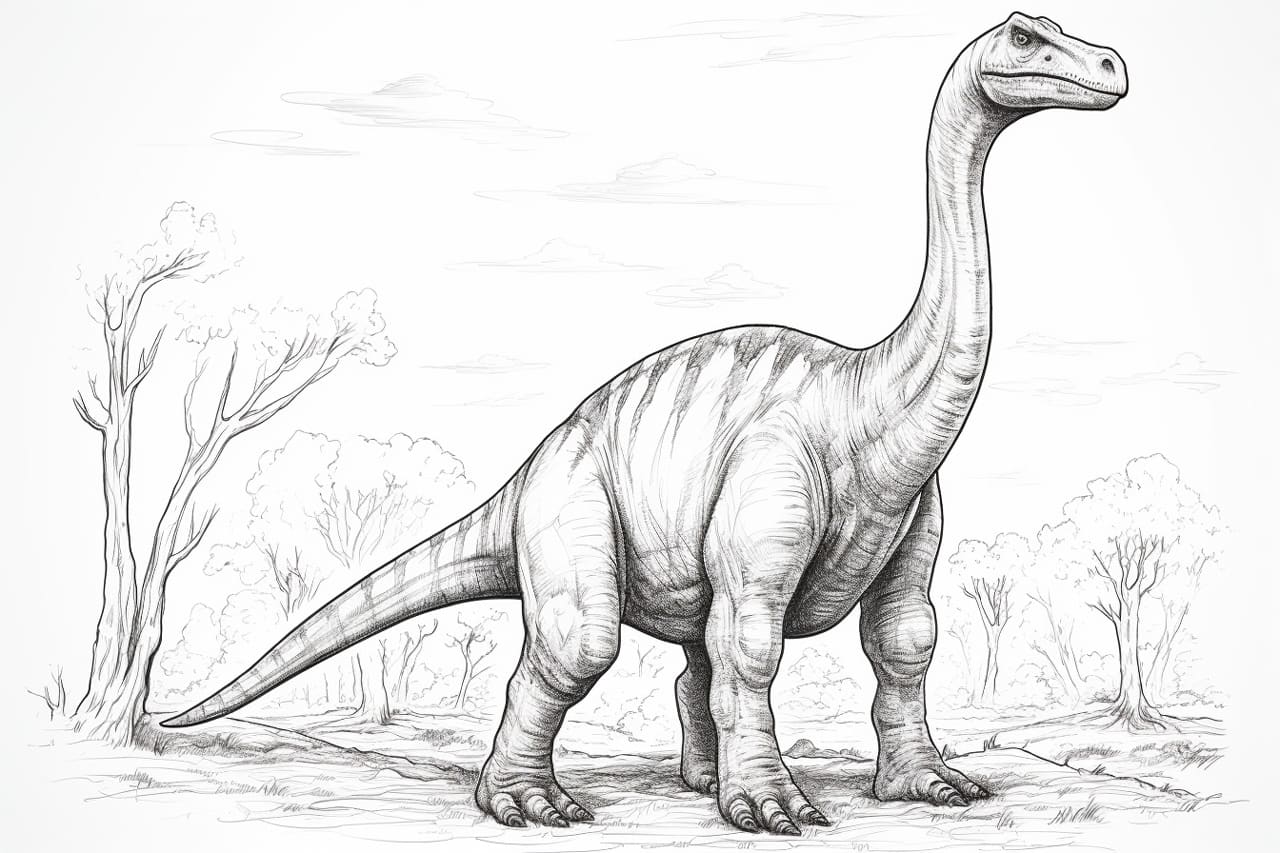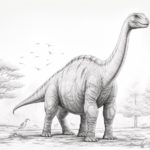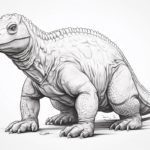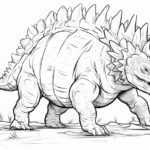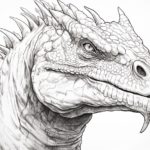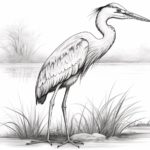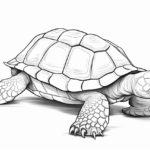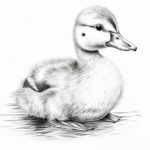Welcome to this step-by-step guide on how to draw a brontosaurus! In this tutorial, I will provide you with clear and concise instructions that will help you create a wonderful illustration of this magnificent creature. Whether you are a beginner or an experienced artist, you will find this guide easy to follow. So, let’s get started!
Materials Required
Before we begin, let’s gather the materials you’ll need for this drawing:
- Drawing paper
- Pencil
- Eraser
- Fine-tip black marker or pen
- Set of colored pencils or markers (optional)
Now that you have your materials ready, let’s dive into the process of drawing a brontosaurus!
Step 1: Basic Shapes
To start, we will begin by drawing the basic shapes that will serve as the foundation for our brontosaurus. Begin by drawing a large oval shape for the body. This will be followed by a smaller oval shape at one end, which will represent the head. Lastly, draw a long, curved line extending from the body for the tail.
Step 2: The Neck and the Tail
Now, let’s work on the neck and the tail of our brontosaurus. Using curved lines, connect the head to the body to create a long and graceful neck. Next, draw a series of horizontal lines along the tail to represent the overlapping vertebrae.
Step 3: Legs and Feet
Moving on to the limbs, we will draw the legs and feet of our brontosaurus. Starting from the bottom of the body, draw two parallel lines extending downward. Then, at the end of these lines, draw a series of small rounded shapes to represent the feet. Repeat this process to draw the remaining three legs.
Step 4: Eye and Nostril
Now let’s add some details to bring our brontosaurus to life. Draw a small circle near the front of the head to create the eye. Inside the eye, draw another smaller circle for the iris. Next, draw a tiny oval shape on the side of the head to represent the nostril.
Step 5: Mouth and Teeth
Continuing with the details, add the mouth and teeth to our brontosaurus. Draw a curved line starting from the front of the head, extending towards the neck. Then, add a row of small, pointed teeth along the bottom jawline.
Step 6: Skin Texture
To give our brontosaurus a realistic appearance, let’s add some texture to its skin. Draw a series of small, curved lines along the body and neck, creating a scaly pattern. You can also add some lines along the tail and limbs to add further detail.
Step 7: Final Outline
Now that the basic structure and details are in place, it’s time to create the final outline of our brontosaurus. Using a fine-tip black marker or pen, carefully trace over the pencil lines, emphasizing the main features of the dinosaur. Once the ink has dried, erase any remaining pencil marks.
Step 8: Coloring (Optional)
If you prefer, you can add color to your brontosaurus using colored pencils or markers. Brontosauruses are often depicted with shades of green or brown, but feel free to get creative with your color choices. Use light, overlapping strokes to fill in the body, and add shading to create depth and dimension.
Great job! You have successfully drawn a brontosaurus from start to finish. Remember, practice makes perfect, so don’t be discouraged if it doesn’t turn out exactly as you envisioned on your first try. With each attempt, you’ll gain more confidence and refine your skills.
I hope you enjoyed this tutorial on how to draw a brontosaurus. Now you have the knowledge and skills to create your own prehistoric masterpiece. Happy drawing!
Conclusion
In conclusion, this step-by-step guide has provided you with clear and concise instructions on how to draw a brontosaurus. By following these steps and using your creativity, you can create a wonderful illustration of this magnificent creature. Remember to start with the basic shapes, add details, and finalize your drawing with ink and color. With practice, you will improve your artistic skills and be able to create even more realistic and detailed illustrations. So, grab your pencil and paper and let your creativity soar as you bring the mighty brontosaurus to life on your canvas!
Fun Facts About Brontosaurus
- Name Confusion: Brontosaurus was initially described as a separate genus from Apatosaurus in the late 19th century. However, further research suggested that the differences between the two were not significant enough to warrant separate classification. In recent years, some paleontologists have proposed resurrecting the name Brontosaurus, leading to ongoing debate and discussion.
- Size and Length: Brontosaurus/Apatosaurus was one of the largest land animals to have ever lived, reaching lengths of up to 75-90 feet (23-27 meters) and weighing as much as 30-40 tons. Despite its enormous size, it had a relatively small head compared to its body.
- Long Neck and Tail: Brontosaurus/Apatosaurus had a long, slender neck and a whip-like tail, both of which helped it reach high vegetation and maintain balance. Its neck alone could measure up to 30 feet (9 meters) in length.
- Herbivorous Diet: Like many other sauropod dinosaurs, Brontosaurus/Apatosaurus was an herbivore, feeding primarily on plants such as ferns, cycads, and conifers. Its peg-like teeth were well-suited for stripping leaves and vegetation from branches.
- Quadrupedal Locomotion: Brontosaurus/Apatosaurus walked on all fours, with its front legs shorter than its hind legs. This quadrupedal stance helped support its massive body weight and allowed it to efficiently forage for food across vast distances.
- Swallowing Stones: To aid in digestion, Brontosaurus/Apatosaurus likely swallowed stones, a behavior known as gastroliths. These stones would grind up plant material in the dinosaur’s stomach, helping to break it down more effectively.
- Social Behavior: Some evidence suggests that Brontosaurus/Apatosaurus may have exhibited social behavior, living in herds or family groups. Fossilized trackways showing multiple individuals traveling together support this hypothesis.
- Discovery and Fossil Record: Fossils of Brontosaurus/Apatosaurus have been found in various locations across North America, including Colorado, Utah, and Wyoming. The first fossils were discovered in the late 19th century during the Bone Wars, a period of intense fossil hunting and rivalry between paleontologists.
- Cultural Impact: Brontosaurus/Apatosaurus has become one of the most iconic dinosaurs in popular culture, appearing in numerous movies, books, and other media. Its immense size and gentle herbivorous nature have captured the imaginations of people around the world.
- Taxonomic Revision: The taxonomy and classification of Brontosaurus/Apatosaurus have been the subject of debate among paleontologists for decades. Recent research has led to revisions in our understanding of these dinosaurs, highlighting the complexities of dinosaur taxonomy and evolutionary relationships.

